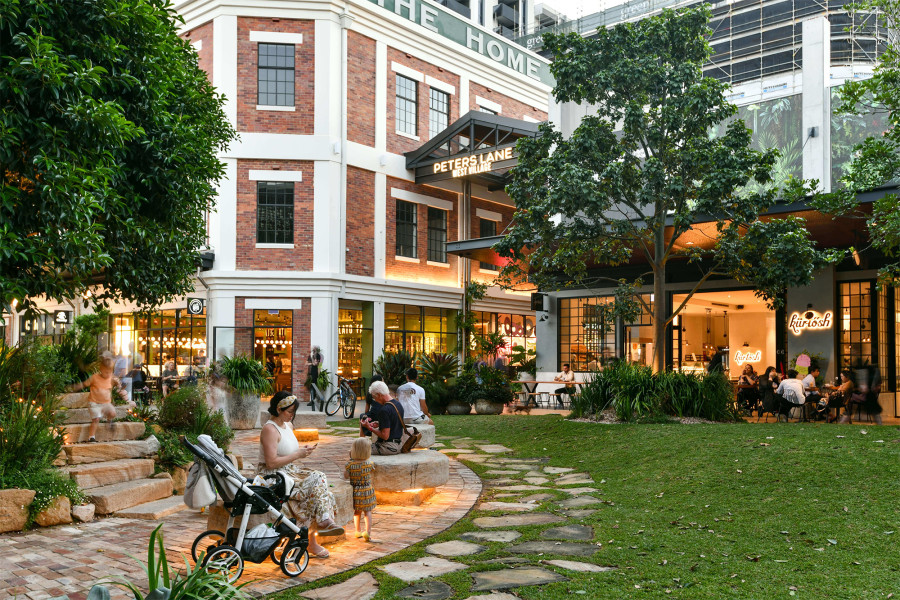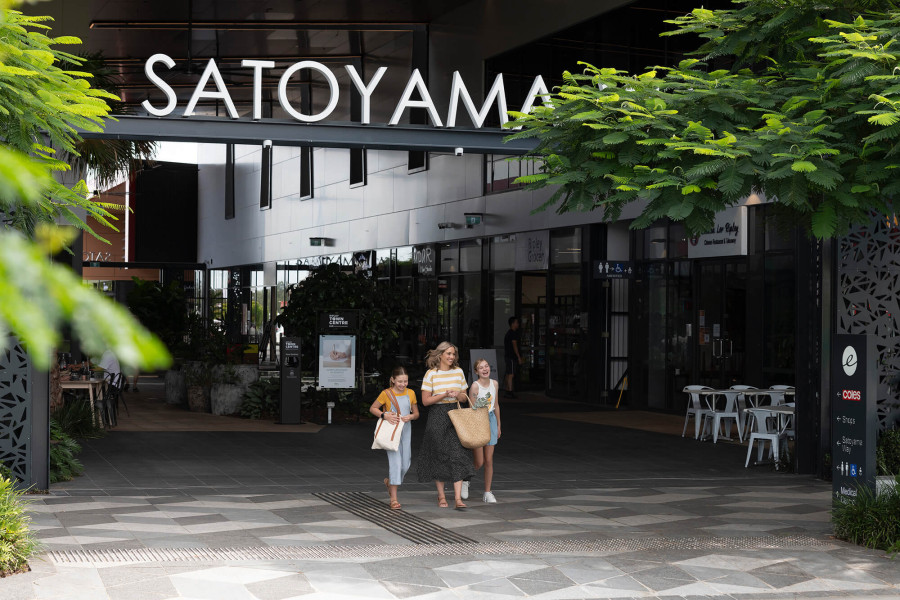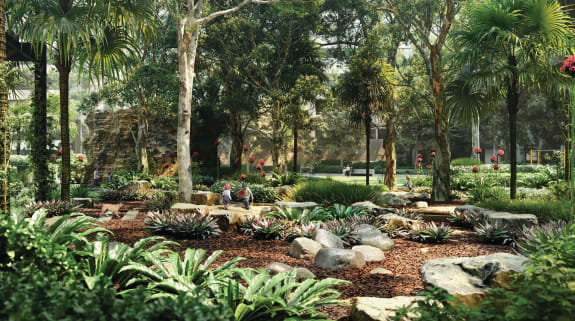Connecting humans and nature with Satoyama
The connection between humans and nature underpins the success of many of Sekisui House’s award-winning, mixed-use and residential developments. A leading company in sustainable residential development, Sekisui House was founded in Japan in 1960 and has since built more than 2.5 million homes around the globe. The company, including its local arm Sekisui House Australia, continues to prioritise environmental, social, economic and residential value by creating communities that improve with time and last for generations.
Sekisui House Australia believes its homes should offer comfort, security and peace of mind for residents while maintaining harmony with the environment and its surroundings. Central to this belief is the Japanese philosophy of Satoyama, meaning ‘ribbons of green’.
Satoyama is a term used in Japanese culture to describe the area between a village and mountain where there is an interface among nature and people. In Satoyama, there are fields to grow rice and vegetables, natural playgrounds to explore, and forests that provide firewood and timber. Natural ecosystems are maintained, and creeks are used to irrigate fields surrounding the village. Over time, the Satoyama area is carefully managed to support village life.
In the Australian context, Satoyama focuses on the idea that both humans and nature can exist alongside and benefit from one another when properly managed — achieving a harmonious interaction between natural and man-made environments. This philosophy is central to Sekisui House Australia’s design principles and can be seen throughout many aspects of the planning and design of its communities.

West Village Recertification, QLD. 6 Star Green Star - Communities
Sekisui House Australia Chief Executive Officer — Apartment & Mixed-Use Developments, Hide Seguchi, said the prioritisation of Satoyama demonstrates the company’s tangible commitment to ESG.
“We are proud to embrace our Japanese heritage in community development and create ecosystems that pay homage to Satoyama as a way to connect our communities to nature every day,”
“Sekisui House developed its Sustainability Vision 2050 as a long-term goal to reflect our ESG commitments, which includes promoting the coexistence of humans and nature to protect the environment and improve quality of life across all of our assets.”
The incorporation of Satoyama within Sekisui House Australia communities has contributed to numerous sustainability accolades and recognition from industry peers. The Green Building Council of Australia awarded south-east Queensland’s Ripley Town Centre and West Village a 5-Star Green Star (Design & As Built) and 6-Star Green Star (Community) certification respectively for outstanding delivery of sustainable design and development.
Ripley Town Centre, Ipswich
Ripley Town Centre, located in Ipswich in south-east Queensland, references Satoyama throughout the design of Satoyama Way, which features a winding path through the commercial mall that mimics the nearby Bundamba Creek — a shallow stream of running water bordered by lush landscaping and benches.
Customers and visitors are connected with the sights and sounds of nature, no matter where they are in the mall. They have line of sight to the greenery of Satoyama, or the sounds of children playing in the shallow water or hopping along the stone structures. This unique customer experience has contributed to the success of the Centre and its retailers since it was delivered in 2018.
The ‘Gohon no ki’ (‘five trees’) landscaping concept, which incorporates Satoyama design, has also been considered throughout Ripley Town Centre. It aims to create gardens with native tree species that are suited to the local climate and to increase green coverage throughout the Centre. Sekisui House has planted more than 18 million trees across Japan under the Gohon no Ki concept. In Ripley Town Centre, more than 500,000 trees, shrubs and ground coverings to date at the Centre and nearby residential development Ecco Ripley. Native beehives have also been introduced to the Centre, which are vital to the maintenance of a diverse and sustainable ecosystem.
As the Ripley Town Centre masterplan vision comes to life over the coming years, Satoyama will remain at the forefront of all design and planning within the community. Green spaces and easy access to nature will allow future residents, tenants and customers to use all five senses and tap into our innate connection with the outdoors. On and off-road pedestrian and cycleway networks will link to all parks, offering opportunities for rest, shade and community interaction. These communal green spaces will provide access to various facilities, parks and attractions, while existing landscape corridors will be conserved and enhanced to encourage biodiversity.

Ripley Town Centre, QLD. 5 Star Green Star - Design & As Built
West Village, Brisbane
Set against the backdrop of the iconic heritage-listed Peters Ice Cream Factory, the $1.2 billion mixed-use West Village precinct in Brisbane’s inner city has won multiple awards for incorporating sustainable and environmentally friendly initiatives into its design.
West Village’s masterplan design is driven by Satoyama and features lush tropical gardens and water features to create a cool and refreshing environment for visitors, employees and residents. In the heat of a Brisbane summer, materials such as bitumen and concrete can absorb and hold the sun’s heat rather than reflect it, raising the ground temperature. To counteract this ‘urban heat island effect’, around half of the West Village site plan is covered with water features, green spaces, lushly landscaped laneways, and materials which reflect heat. The site landscaping provides year-round shade thanks to 100 mature trees and more than 10,000 plants, including 3,000 natives.
Included in the multitude of plant species around West Village is the Richmond Birdwing Butterfly Vine. This vine is the natural food source for the Richmond Birdwing butterfly, the largest sub-tropical Australian butterfly and vulnerable species. The inclusion of the Butterfly Vine at West Village is helping to increase the population of this beautiful butterfly.
Other references to Satoyama include West Village’s rainfall capture system for irrigation, solar power for lighting public spaces, active travel options, reduction of food waste going to landfill and the promotion of Indigenous peoples’ history and connection with the site.
Other communities
Melrose Park North
- 50,000sqm of newly curated parkland incorporating biodiversity features
- Solar photovoltaic panels, reducing the reliance coal-powered electricity
- Excavated material re-used onsite, reducing the need for off-site material
- Water harvesting design to re-use rainwater and groundwater.
The Orchards
- Solar panels spanning 6,000sqm, providing 1 GWh of free solar power every year
- Stormwater captured and treated prior to discharge
- Regeneration strategy to encourage biodiversity and the preservation of fauna
- Linear Park providing 14ha of publicly accessible parkland.
Sanctuary
- Dual water supply network that uses reclaimed rainwater and greywater
- Rainwater tanks to collect runoff, with water reticulated into irrigation fixtures and landscaping water features
- Stormwater managed and treated via vegetated bio-retention swales consisting of constructed wetlands, street trees and pollutant traps.
Gledswood Hills
- 3km purpose-built green corridor incorporating Gledswood Hills Reserve
- 40ha landscaped parklands and reserves


